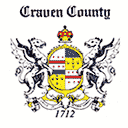Better News Regarding Fringetrees and EAB
go.ncsu.edu/readext?836828
en Español / em Português
El inglés es el idioma de control de esta página. En la medida en que haya algún conflicto entre la traducción al inglés y la traducción, el inglés prevalece.
Al hacer clic en el enlace de traducción se activa un servicio de traducción gratuito para convertir la página al español. Al igual que con cualquier traducción por Internet, la conversión no es sensible al contexto y puede que no traduzca el texto en su significado original. NC State Extension no garantiza la exactitud del texto traducido. Por favor, tenga en cuenta que algunas aplicaciones y/o servicios pueden no funcionar como se espera cuando se traducen.
Português
Inglês é o idioma de controle desta página. Na medida que haja algum conflito entre o texto original em Inglês e a tradução, o Inglês prevalece.
Ao clicar no link de tradução, um serviço gratuito de tradução será ativado para converter a página para o Português. Como em qualquer tradução pela internet, a conversão não é sensivel ao contexto e pode não ocorrer a tradução para o significado orginal. O serviço de Extensão da Carolina do Norte (NC State Extension) não garante a exatidão do texto traduzido. Por favor, observe que algumas funções ou serviços podem não funcionar como esperado após a tradução.
English
English is the controlling language of this page. To the extent there is any conflict between the English text and the translation, English controls.
Clicking on the translation link activates a free translation service to convert the page to Spanish. As with any Internet translation, the conversion is not context-sensitive and may not translate the text to its original meaning. NC State Extension does not guarantee the accuracy of the translated text. Please note that some applications and/or services may not function as expected when translated.
Collapse ▲A 2015/2016 study of 166 white fringetrees (Chionanthus virginicus) growing in landscapes in Pennsylvania, Ohio, Indiana and Illinois (Peterson and Cipollini) indicated that emerald ash borers (EAB) were able to infest this species in addition to their normal ash (Fraxinus spp.) hosts. This study raised great concerns about the future of white fringetrees in landscapes and in the wild. A follow up study by Ellison, Peterson and Cipollini provides a more hopeful outlook.
According to a March 2020 article in Entomology Today, white fringetrees are expected to be able to withstand attacks by EAB. In this later study, it was observed that some attacked trees did not survive and others declined in health. However, trees that weren’t re-infested were able to recover. One important characteristic of landscape plantings as compared with native populations is that, as noted by Cipollini, “Ornamental trees tend to be small and planted in low density situations”. EAB is more likely to be attracted to and sustained by larger trees in denser stands, as would be the case with wild populations. Overall, it is expected that ” … this species will meet a better fate than most ash trees native to eastern North America.”
As for the connection between ash trees and fringetrees, both genera are members of the Oleaceae or olive family. A cultivated olive, Olea europaea, has also been confirmed as a suitable host for EAB.





